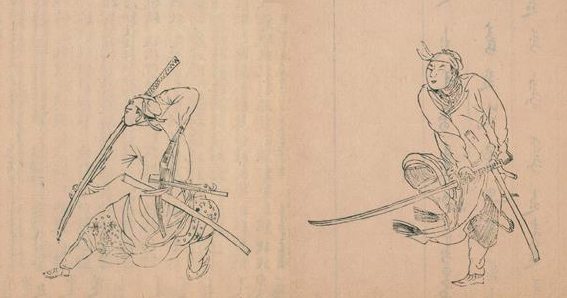Qī Jìguāng 戚繼光, a general of the Míng 明 dynasty and military genius, not only invented the "mandarin duck" formation (鴛鴦陣 yuānyāng zhèn), but modified the design of the Chinese long sabre based on the Japanese one, and also studied Japanese sword techniques to introduce them into the handling of this weapon.
Throughout history, Japan has been influenced by the Chinese empire in all spheres of culture, from writing to religion to metallurgy as well. This influence almost always occurred across the Korean peninsula, from where the ships departed for the Japanese archipelago.
Throughout the long history of cultural exchange between the two countries, it is believed that there were two particularly important moments. Both were moments of wars in the Chinese empire, when there were large population movements, possibly including defeated troops that would take refuge in Japan.
The first of these "waves" took place during the Hàn 漢 dynasty and the next, even more important, during the Táng 唐 dynasty. It was in the latter that large numbers of Chinese long sabres arrived in Japan. Several centuries later, during the Míng era, the reverse process took place, and Japanese weapons and techniques came to China brought by the wōkòu 倭寇.
The wōkòu were pirates ravaging the shores of the Míng empire from several islands, and although they were made up of both Japanese and Chinese and Koreans, many of them had been former samurai, so they were experienced and well-trained warriors.

Representation of japanese pirates or wōkòu 倭寇.
In addition to the Japanese's superior ability, they carried two-handed long sabres, to which Chinese one-handed sabres were at disadvantage.
Impressed by both the quality of the Japanese sabres and their techniques, General Qī Jìguāng managed to acquire a manual of Kage-ryū 陰流, one of Japan's schools of sword. After studying its techniques, Qī modified them to fit the Chinese chángdāo 長刀 or long sabre, which according to his own descriptions at the time had a blade length of almost two meters and a handle of about one-third of its total length, which made it similar to the Japanese sword known as ōdachi 大太刀.
He also ordered the production of swords based on Japanese design, although similar sabres had previously been produced in China, at least in the 14th century, and were called wōgǔndāo 倭滾刀.
General Qī's troops successfully used these new techniques against the Japanese themselves, and later, in the years when Qī Jìguāng was stationed on the northern border, against the Mongol hordes, finding the chángdāo especially effective.

Illustrations from a long sabre manual of the Míng dynasty,
whose techniques were applicable to both the chángdāo 長刀 and the miáodāo 苗刀.
Until the 18th century, Chinese sabres designed on the basis of Japanese ones enjoyed great popularity. To this day, many people know these sabres by the name of qījiādāo 戚家刀 or "Qī family sabres", in reference to Qī Jìguāng.
These events constitute one more episode in the history of the cultural exchange between China and Japan. Chinese weapons and military arts, which had traveled to Japan and exerted great influence there, evolved in the Japanese archipelago differently than they did in China, and over time, this influence became reciprocal.
It is also said that the miáodāo 苗刀, another Chinese sabre reminiscent of the katana, bases its techniques on Japanese swordsmanship.
